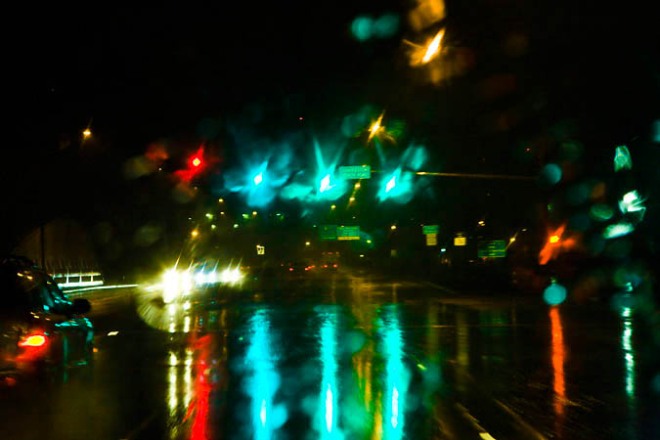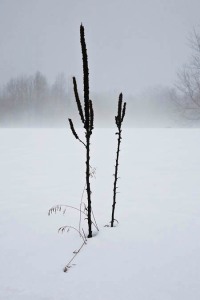
For most of Earth’s several billion years, the night was a time for stealthy, quiet movements by night predators and prey. Other animals, creatures of the day, hunkered down until the return of the light. During the short history of people, our ancestors were the hunkering down kind of creatures, until the invention of fire began to  push back the blackness to the cave entrance. Now, fast forward a million or so years, and we drive fearlessly for long distances through the inky depths, thanks to headlights, taillights, neon signs, stoplights, billboards, streetlights, and lights in businesses welcoming us inside. We think of this as normal, but it was not a widespread part of human life until we entered the prior century.
push back the blackness to the cave entrance. Now, fast forward a million or so years, and we drive fearlessly for long distances through the inky depths, thanks to headlights, taillights, neon signs, stoplights, billboards, streetlights, and lights in businesses welcoming us inside. We think of this as normal, but it was not a widespread part of human life until we entered the prior century.
For this series of pictures, created during an early evening drive from Shelton to Bremerton in the Puget Sound region of Washington, I wanted to capture an impressionistic view of the lights along the way. This was a night of torrential rain, which caused flooding throughout western Washington. But with all the puddled and pooled rain on the roadways, it was a beautiful night of lights reflected off pavement.

I set my digital camera to a high ISO setting, enabling me to fire the camera without agonizingly long exposures. I set the lens on autofocus, then steered the vehicle with my left hand while taking pictures with my right hand through the wet windshield.  When I later described this to my wife, her first reaction was: “Do you want to die?!” Well, no. And I can’t recommend this as a safe procedure. But I wasn’t looking through the viewfinder during any of the moving exposures, so my eyes were still on the road. Autofocus and autoexposure took the place of my normal fussiness about photography and, without looking through the viewfinder, careful composition took a backseat to instinct. The exposures ranged from perhaps half a second to maybe eight seconds (I couldn’t check while driving), and I bracketed to some degree. When stopped at a stoplight, I was able to get some photographs while quickly composing through the viewfinder.
When I later described this to my wife, her first reaction was: “Do you want to die?!” Well, no. And I can’t recommend this as a safe procedure. But I wasn’t looking through the viewfinder during any of the moving exposures, so my eyes were still on the road. Autofocus and autoexposure took the place of my normal fussiness about photography and, without looking through the viewfinder, careful composition took a backseat to instinct. The exposures ranged from perhaps half a second to maybe eight seconds (I couldn’t check while driving), and I bracketed to some degree. When stopped at a stoplight, I was able to get some photographs while quickly composing through the viewfinder.
When I got to my destination, I quickly downloaded the 100+ photographs and was pleased with the results. My favorite pictures, shown here, have a hint of impressionism and vividly portray the gaudy colors that greet us when we venture out at night.
And, no, I don’t intend to do this again (at least in the near future), so you can feel safe on the roads, as long as you realize that the oncoming high-beams may hide a cell phone user, drunk driver, text messager, GPS follower, makeup applier, video watcher, face shaver, or some other modern multitasker behind the wheel!


To see my web site, which includes photographic prints for sale, please go to LeeRentz.com
NEW: To see thousands of my photographs in large file sizes for use in magazines or other printed materials or electronic media, go to my PhotoShelter Website
Click on the photographs below for larger versions with captions.












 the cold and icy month. But weathermen were predicting a letup from the cold–a front of unseasonably warm air was blowing in, creating a certainty of fog. I love photographing foggy landscapes, so the change of weather was just perfect. Less so the roads.
the cold and icy month. But weathermen were predicting a letup from the cold–a front of unseasonably warm air was blowing in, creating a certainty of fog. I love photographing foggy landscapes, so the change of weather was just perfect. Less so the roads. When she tried to lead us down a road that was, in reality, an unplowed trail, we drew the line. Fortunately, she didn’t get upset at us and simply recalculated our route. Nice lady computer.
When she tried to lead us down a road that was, in reality, an unplowed trail, we drew the line. Fortunately, she didn’t get upset at us and simply recalculated our route. Nice lady computer.









 understand, my brain searches for reasons behind the beauty that I capture with my camera. Nature is filled with patterns that are governed by physics and evolution.
understand, my brain searches for reasons behind the beauty that I capture with my camera. Nature is filled with patterns that are governed by physics and evolution. These dendritic (think tree branches) formations each had a hole in the center with branching tentacles radiating out from the center hole. When I photographed them, the temperature was above freezing, and the water in the dendritic formations was liquid. It looks to me as if rainwater and meltwater flow from the tips of the tentacles to the hole in the center. But what caused these holes to begin with? And why are they fairly regularly spaced across the lake? Is water flowing into or out of the hole in the center? This inquiring left brain wants to know, and I would appreciate your suggestions. I will update this entry if someone has a definitive explanation.
These dendritic (think tree branches) formations each had a hole in the center with branching tentacles radiating out from the center hole. When I photographed them, the temperature was above freezing, and the water in the dendritic formations was liquid. It looks to me as if rainwater and meltwater flow from the tips of the tentacles to the hole in the center. But what caused these holes to begin with? And why are they fairly regularly spaced across the lake? Is water flowing into or out of the hole in the center? This inquiring left brain wants to know, and I would appreciate your suggestions. I will update this entry if someone has a definitive explanation.



